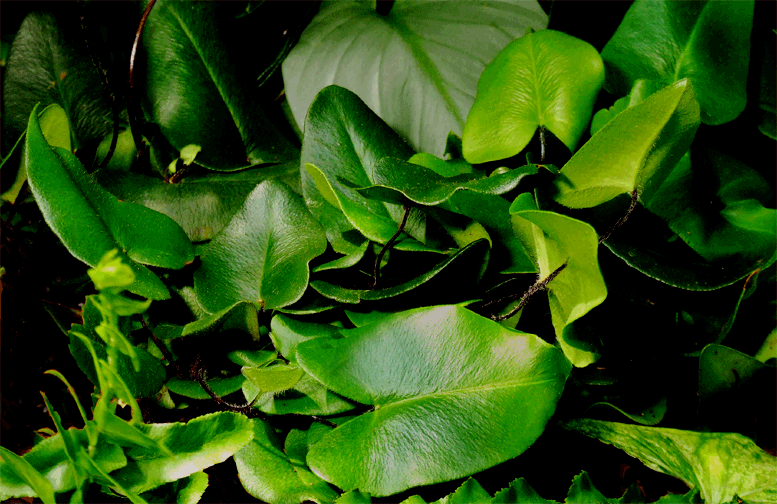![]()
Aroids and other genera in the Collection
Take the Tour Now?
Orchids
The
Exotic Rainforest
Plants in
the Exotic Rainforest Collection
Images on this website are copyright protected. Contact us before
attempting to reuse.

Common names: Heart Fern, Tongue Fern
Synonyms:
Asplenium arifolium, Gymnogramma arifolia, Gymnogramma sagittata, Hemionitis cordata,
Hemionitis cordifolia, Hemionitis sagittata, Hemionitis toxotis
Identified to science in
1859, Hemionitis arifolia is an attractive and unusual
dwarf fern primarily from Laos, Sri Lanka, Vietnam and possibly China, Taiwan and other
nations in tropical Southeast Asia. The fern is
both an epiphyte (ep-a-FIT) and grows on trees as well as a terrestrial plant.
In
Asian folklore Hermionitis arifolia is used to treat diabetes
The fern has been medically evaluated for its hypoglycemic and
anti-diabetic properties in rats. Some of the extracts found
in Hemionitis arifolia were
actually found to lower the levels of blood glucose in sugar fed rats
but only a small amount of the hypoglycemic activity in overnight
fasted non-diabetic rats was seen. It is unknown if there is a possible
human use for the fern's extracts.
In our magnified photograph you can observe this attractive fern has dark green cordate (heart shaped) fronds which grow on blackish stems with fronds that reach 5 to 7.5cm (2" to 3") in length. The small dainty shade loving fern grows well in low light with high humidity. Hemionitis arifolia also grows well as a terrarium plant or in a very shady area in an atrium. The leathery heart-shaped fronds feature tall fertile frond leaves that spread above the fern's foliage. Hemionitis arifolia is hardy in Zone 10 or higher and It can be grown in the lower portions of Florida outdoors. Otherwise it must be grown indoors in a terrarium or in a greenhouse. The fern reaches 15 to 20cm (6" to 8") in height. This plant has numerous synonyms (same plant, other names) so you may find it available under a variety of names.